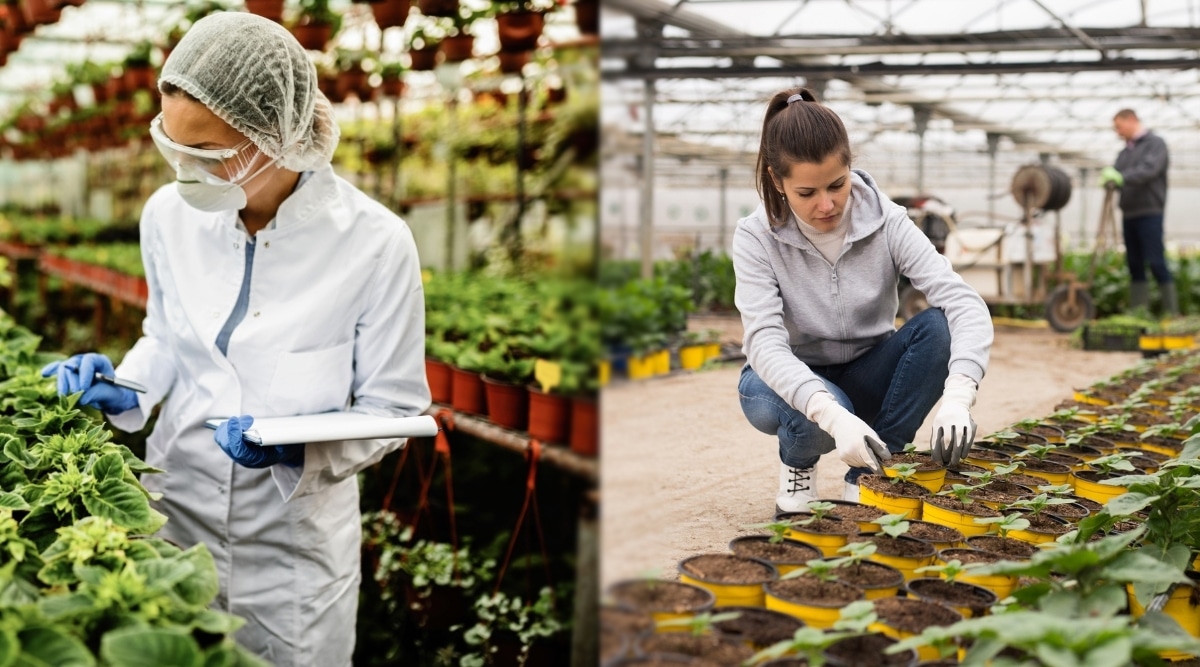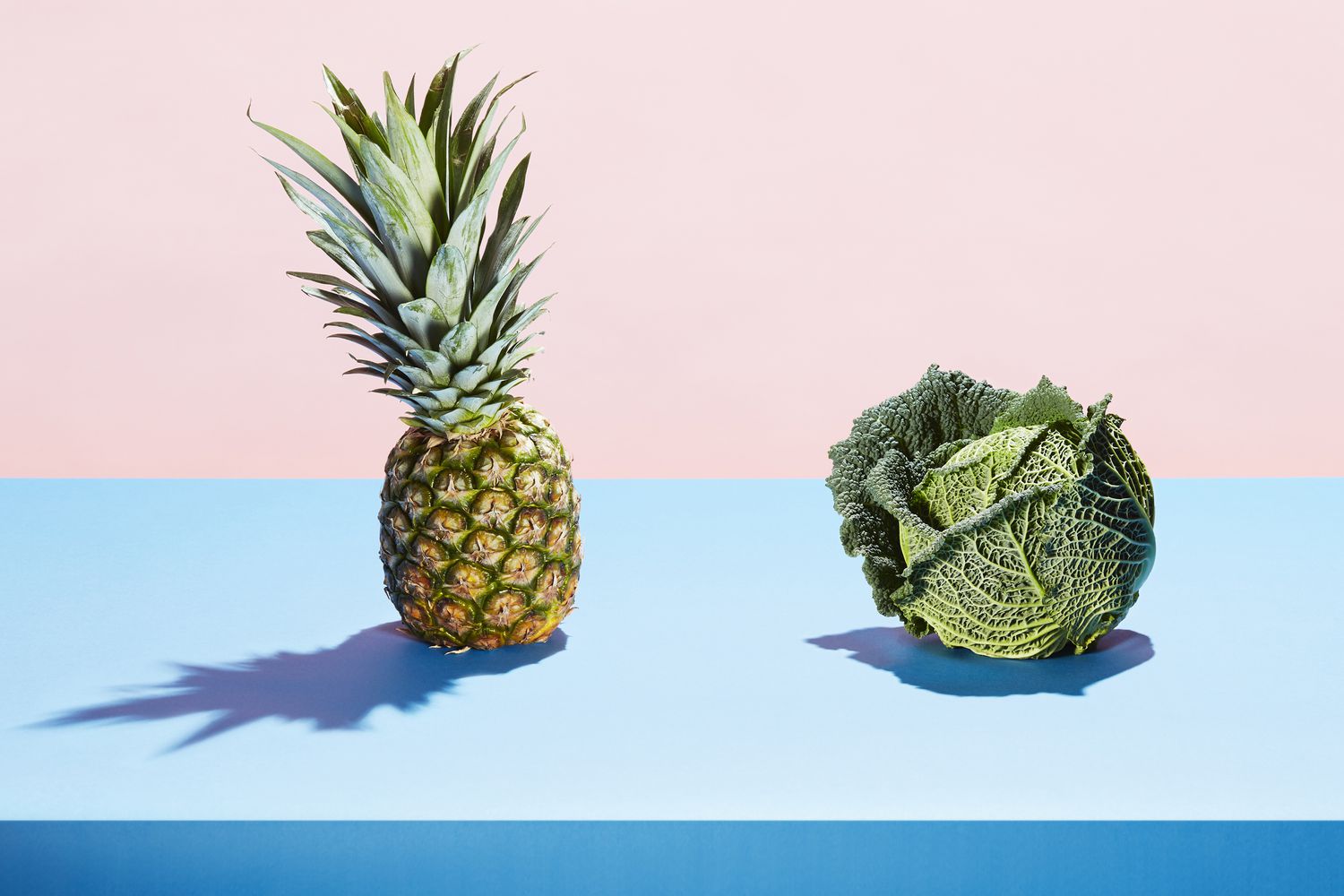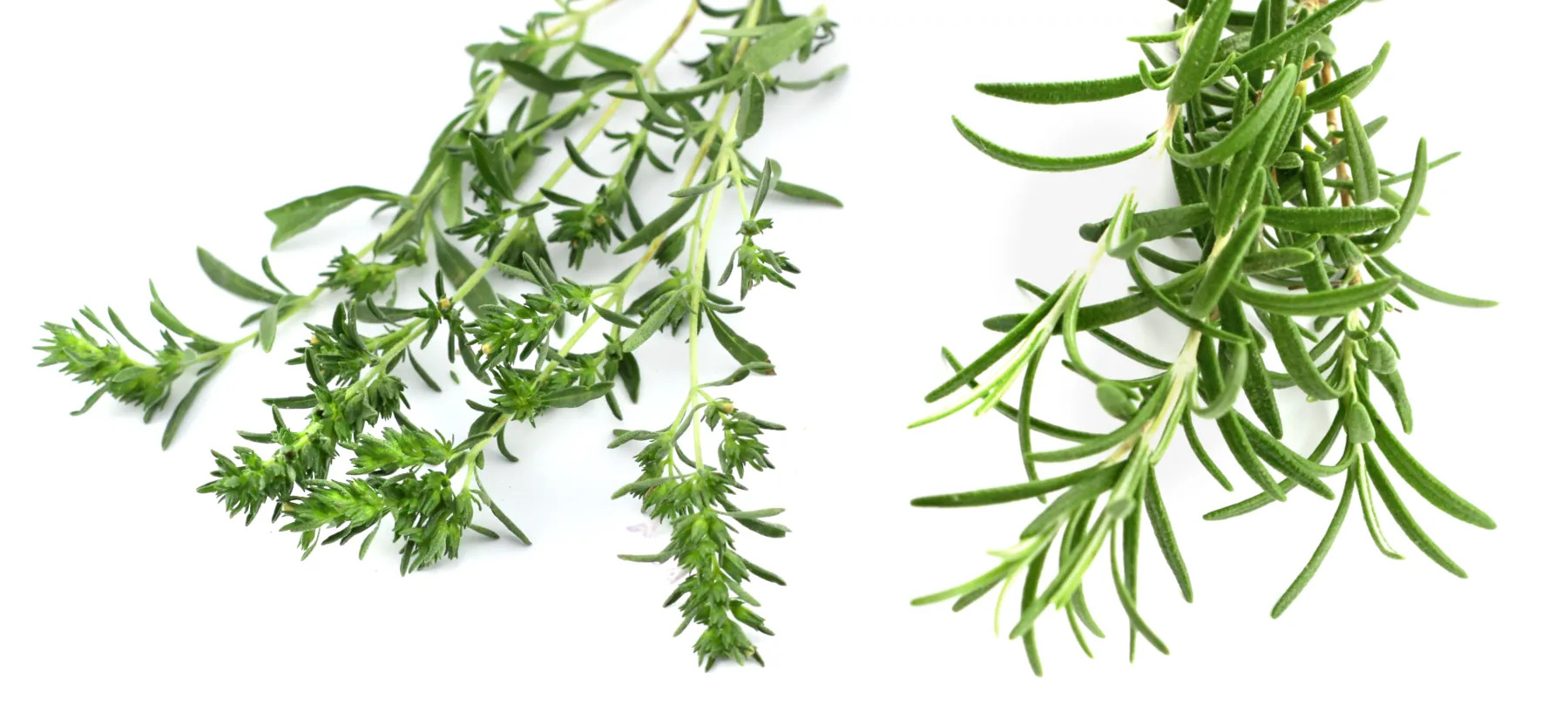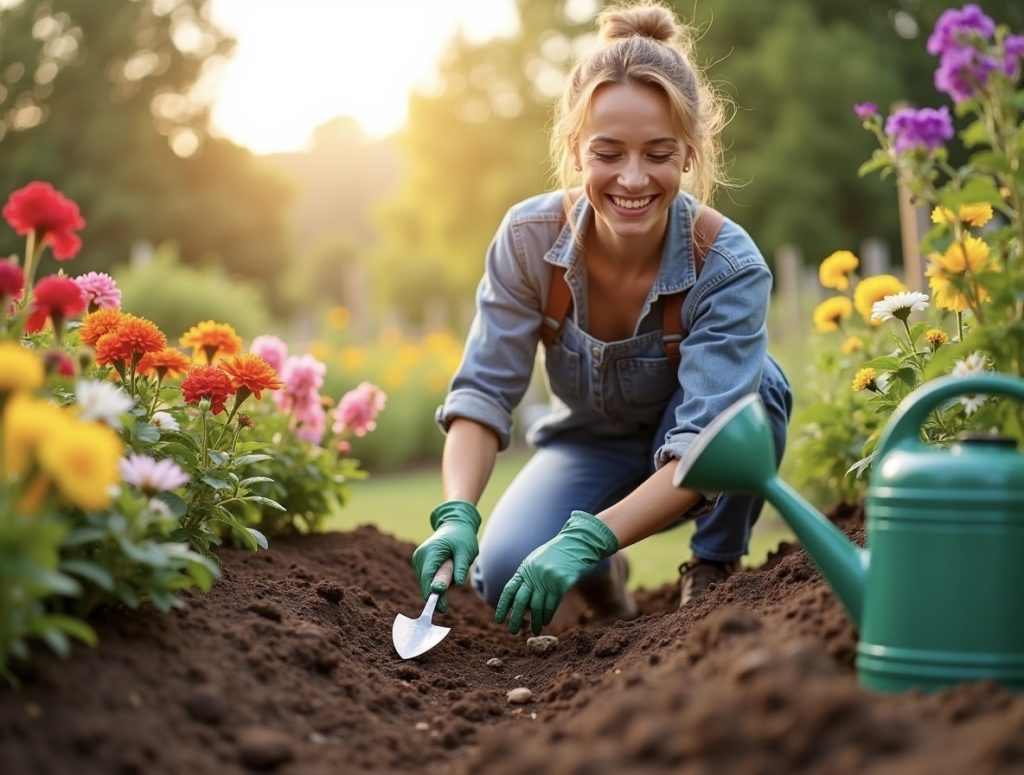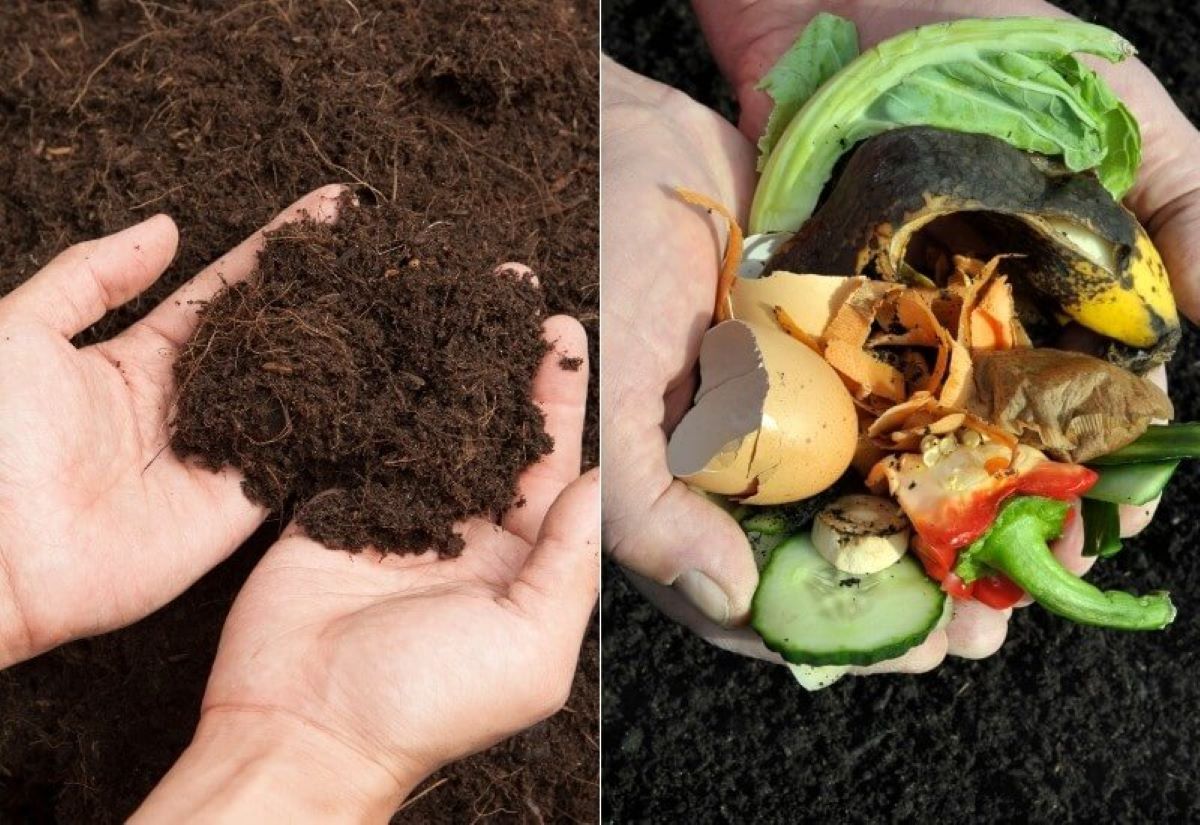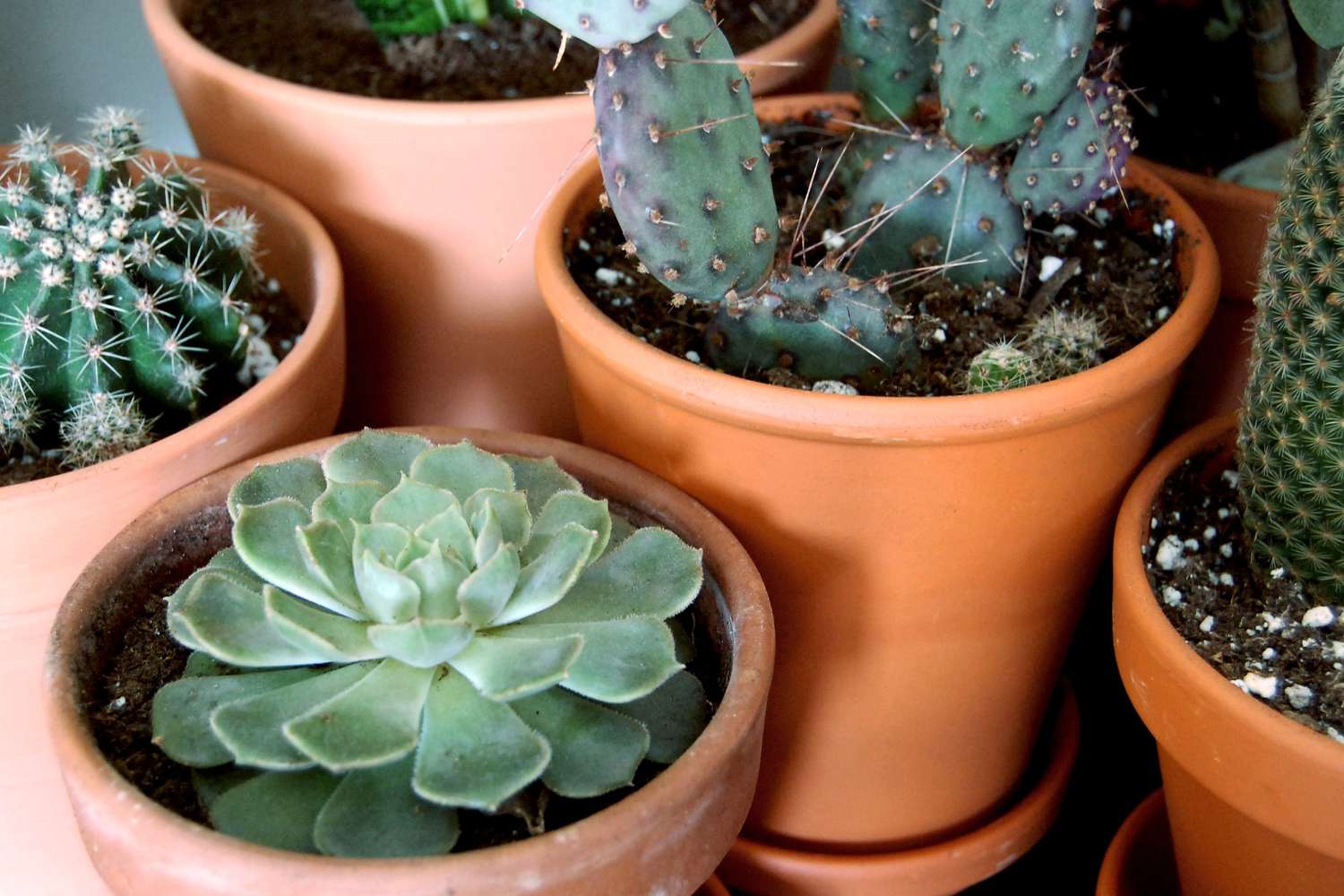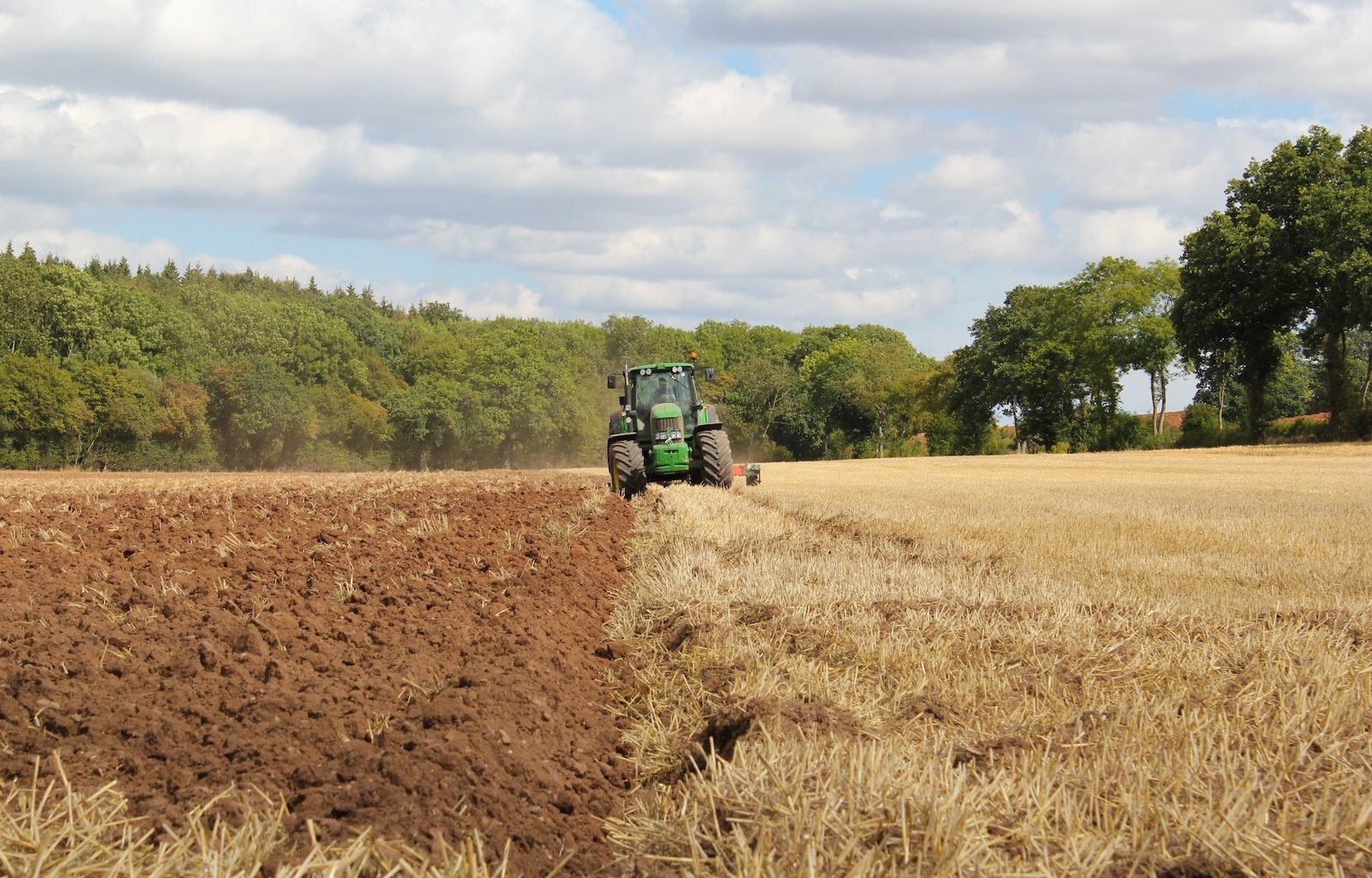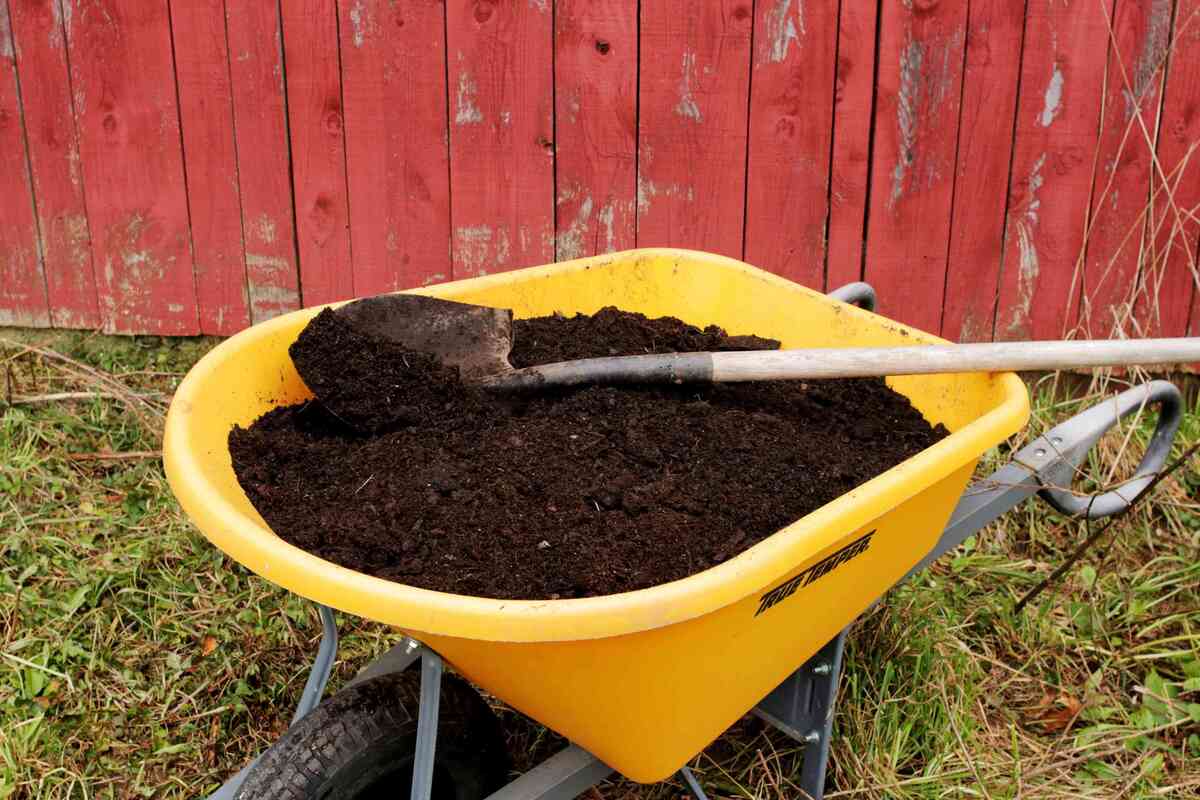Home>Gardening Basics>Understanding Soil>What Is The Difference Between Topsoil And Garden Soil
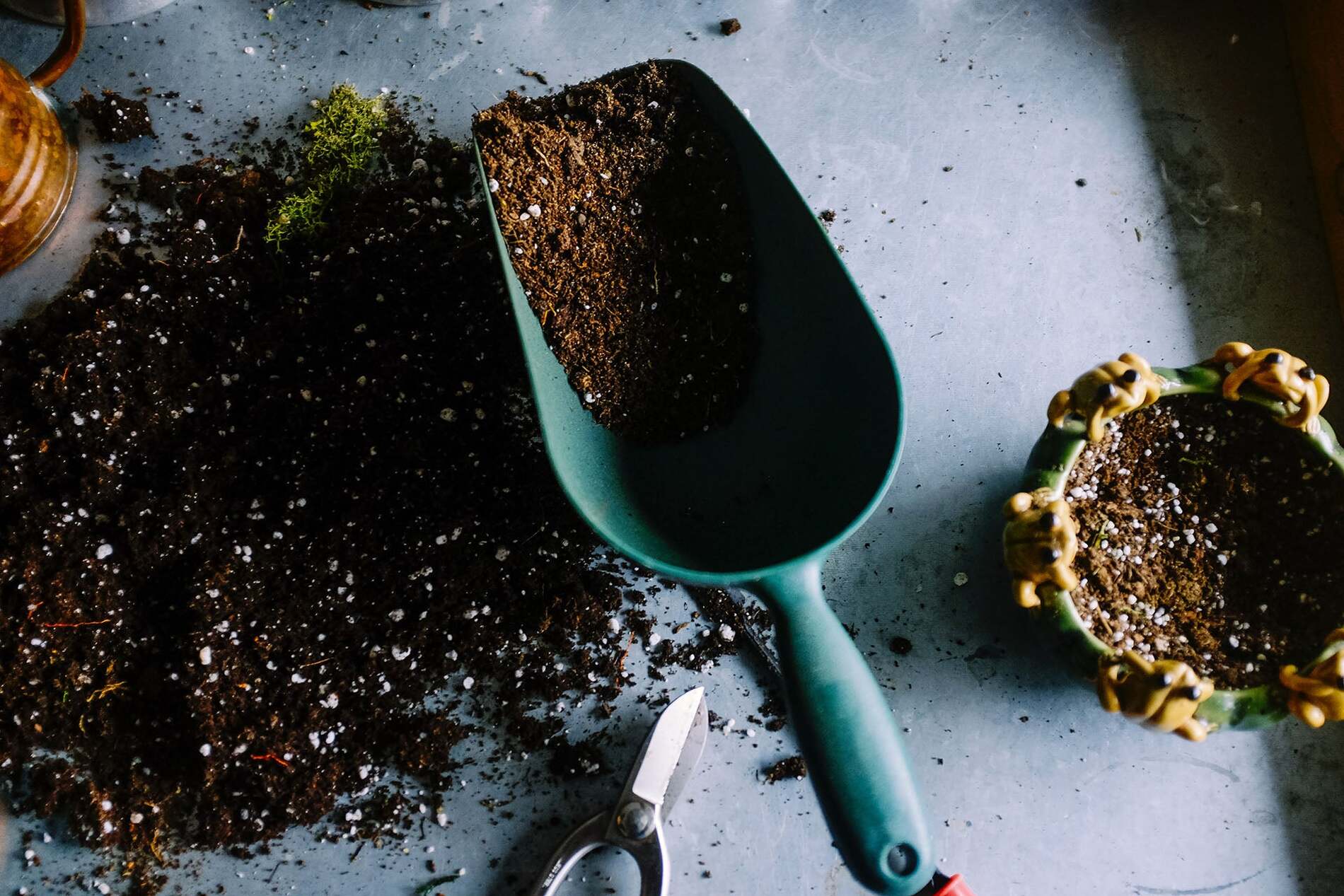

Understanding Soil
What Is The Difference Between Topsoil And Garden Soil
Modified: February 10, 2024
Looking to understand soil? Learn the difference between topsoil and garden soil and discover which one is best for your gardening needs.
(Many of the links in this article redirect to a specific reviewed product. Your purchase of these products through affiliate links helps to generate commission for Chicagolandgardening.com, at no extra cost. Learn more)
Table of Contents
- Introduction
- Definition of Topsoil
- Definition of Garden Soil
- Composition of Topsoil
- Composition of Garden Soil
- Nutrient Content of Topsoil
- Nutrient Content of Garden Soil
- pH Level of Topsoil
- pH Level of Garden Soil
- Water Retention of Topsoil
- Water Retention of Garden Soil
- Uses of Topsoil
- Uses of Garden Soil
- Conclusion
Introduction
When it comes to gardening and landscaping, soil is a crucial element that can greatly impact the health and growth of plants. Two commonly discussed types of soil are topsoil and garden soil. While they may sound similar, there are distinct differences between the two that every gardener should understand.
Topsoil refers to the uppermost layer of soil, typically comprising the first 5 to 10 inches. It is teeming with organic matter, microorganisms, and nutrients, making it the most fertile layer. The quality of the topsoil greatly influences plant growth and is often the focus of many gardeners and landscapers.
Garden soil, on the other hand, is a mixture that can vary in composition and is specifically formulated for use in gardens and raised beds. It is typically a blend of topsoil, organic matter, and other additives aimed at providing the optimal conditions for plants to thrive.
Understanding the differences between topsoil and garden soil is essential for gardeners in order to make informed decisions about soil selection for their specific needs. In this article, we will explore the composition, nutrient content, pH levels, water retention, and various uses of both topsoil and garden soil.
Definition of Topsoil
Topsoil is the uppermost layer of soil found on the Earth’s surface. It is a crucial component of the soil profile and plays a vital role in supporting plant growth. Topsoil is typically composed of mineral particles such as sand, silt, and clay, along with organic matter, microorganisms, and plant roots. It is the most fertile layer of soil and provides nutrients, moisture, and a hospitable environment for plants to flourish.
The thickness of the topsoil layer can vary, but it generally extends from the surface down to about 5 to 10 inches. This layer is a result of weathering and the decomposition of organic matter over time. It is rich in nutrients, including nitrogen, phosphorus, and potassium, which are essential for plant growth.
One of the distinguishing characteristics of topsoil is its dark color, which is a result of the organic matter present in the soil. This organic matter, consisting of decaying plant and animal materials, contributes to the soil’s fertility by providing a continuous source of nutrients and increasing its water-holding capacity.
Topsoil can vary in texture depending on the predominant particles it contains. Sandy topsoil has larger particles, which results in better drainage but lower water-holding capacity. Clayey topsoil, with smaller particles, has higher water-holding capacity but can become compacted easily. Loamy topsoil, with a balanced mixture of sand, silt, and clay, is considered ideal for plant growth due to its ability to retain moisture while still providing sufficient drainage.
In summary, topsoil is the uppermost layer of soil that contains a rich concentration of nutrients, organic matter, microorganisms, and plant roots. Its fertility and composition play a critical role in supporting plant growth and are of great importance to gardeners and landscapers.
Definition of Garden Soil
Garden soil, also known as potting soil or planting mix, is a specifically formulated soil blend designed for use in gardens, raised beds, containers, and other planting environments. Unlike topsoil, which is a natural layer of soil found in nature, garden soil is a man-made mixture that combines different components to create ideal growing conditions for plants.
Garden soil is typically a blend of various ingredients, including topsoil, organic matter, compost, peat moss, and perlite or vermiculite. The specific proportions of these components can vary depending on the brand or formulation. The purpose of blending these ingredients is to create a well-draining, nutrient-rich, and moisture-retaining medium for plants.
One of the primary functions of garden soil is to provide a balanced and fertile substrate for plants to establish their roots and access essential nutrients. The organic matter and compost incorporated into the soil mix enrich it with beneficial microorganisms, which aid in nutrient cycling and enhance soil fertility over time.
Unlike topsoil, which may have varying levels of nutrients and organic matter depending on its source, garden soil is often manufactured with consistent nutrient content. This makes it easier for gardeners to provide a uniform and nutrient-rich environment for their plants.
Garden soil is also formulated to have excellent drainage properties while still retaining enough moisture to keep plants hydrated. The addition of organic matter, such as compost and peat moss, improves the water-holding capacity of the soil and reduces the risk of waterlogged roots.
In summary, garden soil is a specially crafted mixture that combines various components, including topsoil, organic matter, and additives, to create an optimal growing medium for plants. It provides a consistent nutrient supply, good drainage, and moisture retention to support healthy plant growth in gardens and containers.
Composition of Topsoil
Topsoil is a complex mixture that consists of various components, each playing a crucial role in providing the necessary nutrients and support for plant growth. The composition of topsoil can vary depending on factors such as climate, location, and human activity. However, there are several common components that can be found in most topsoil compositions.
The primary components of topsoil are mineral particles, organic matter, water, and air. Mineral particles include different sizes of sand, silt, and clay. These particles contribute to the texture of the soil and affect its drainage and water-holding capacity. Sandy soils have larger particles, which allow for faster drainage but may require more frequent irrigation. Clay soils have smaller particles, resulting in slower drainage but higher water retention.
Organic matter is another key component of topsoil. It consists of decomposed plant and animal materials, such as leaves, twigs, and dead organisms. This organic matter provides essential nutrients for plant growth, improves soil structure, and enhances water-holding capacity. It also serves as a food source for beneficial microorganisms that aid in nutrient cycling.
Water and air are crucial in topsoil composition, as they create a suitable environment for roots and microorganisms. Adequate water supply allows plants to absorb nutrients from the soil, and proper aeration ensures the exchange of gases between the soil and the atmosphere, supporting root respiration and microbial activity.
Topsoil may also contain other elements like rocks, stones, and debris, which can affect the soil’s texture and drainage. Additionally, human activities such as landscaping, agriculture, and construction can introduce contaminants or alter the composition of topsoil in specific areas.
The overall health and fertility of topsoil depend on maintaining a well-balanced composition of its components. Proper management practices, such as adding organic amendments, avoiding excessive chemical fertilizers, and preventing soil erosion, are crucial in preserving the composition of topsoil and ensuring its continued productivity for plant growth.
Composition of Garden Soil
Garden soil, also known as potting soil or planting mix, is a carefully crafted mixture designed to provide an ideal growing medium for plants. It combines various components to create a balanced and nutrient-rich soil composition. The specific composition of garden soil can vary depending on the brand or formulation, but there are several common components that can be found in most garden soil mixtures.
One of the important components of garden soil is topsoil. It forms the foundational layer and provides the mineral content necessary for plant growth. Topsoil contains different-sized mineral particles, including sand, silt, and clay, which contribute to the soil’s texture and drainage properties. The presence of topsoil ensures that the garden soil has a solid base of minerals for plants to access.
Organic matter is another key component of garden soil. It includes compost, peat moss, and other organic materials that enhance the soil’s nutrient content and water-holding capacity. Organic matter provides a continuous supply of nutrients as it decomposes, supporting healthy plant growth and improving soil structure. It also fosters beneficial microbial activity, which aids in nutrient cycling and overall soil health.
To ensure proper aeration and drainage, garden soil often contains additives like perlite or vermiculite. These materials are lightweight and help create air pockets in the soil, promoting oxygen flow to the roots. They also help improve the drainage capability of the soil, preventing waterlogging and reducing the risk of root rot.
In some cases, garden soil may also contain additional amendments or additives, such as slow-release fertilizers, pH adjusters, or specific micronutrients, depending on the intended use of the soil mix. These additives can help provide specific nutritional needs or create optimal growing conditions for certain types of plants.
The composition of garden soil is carefully balanced to meet the nutritional requirements of plants while providing adequate drainage and moisture retention. Different formulations exist for specific plant types or purposes, such as container gardening, raised beds, or landscaping. It is important to choose the appropriate composition based on the specific needs of the plants being grown.
In summary, garden soil is a blend of components that includes topsoil, organic matter, additives, and amendments. The composition is designed to provide a balanced and nutrient-rich growing medium for plants. Understanding the composition of garden soil allows gardeners to create optimal conditions for plant growth and ensure successful gardening experiences.
Nutrient Content of Topsoil
Topsoil is a rich source of nutrients that are essential for plant growth and development. The nutrient content of topsoil can vary depending on factors such as location, soil composition, and agricultural practices. However, there are several key nutrients that are commonly found in topsoil.
The primary macronutrients found in topsoil include nitrogen (N), phosphorus (P), and potassium (K), often referred to as NPK. Nitrogen is crucial for leaf and stem development, phosphorus promotes root growth and flower formation, while potassium supports overall plant health and disease resistance.
In addition to the macronutrients, topsoil also contains secondary nutrients such as calcium (Ca), magnesium (Mg), and sulfur (S), which play important roles in various plant processes. Calcium is essential for root development and cell wall formation, magnesium is involved in chlorophyll production, and sulfur contributes to protein synthesis and enzyme function.
Topsoil also contains micronutrients, which are required in smaller quantities but are equally important for plant health. These micronutrients include iron (Fe), manganese (Mn), zinc (Zn), copper (Cu), boron (B), molybdenum (Mo), and nickel (Ni). Each of these micronutrients has specific functions in plant metabolism, enzyme production, and overall nutrient uptake.
The nutrient content of topsoil can be influenced by various factors, such as the type of vegetation growing in the area, the presence of organic matter, and the history of fertilizer application. The quality of topsoil can deteriorate over time due to erosion, leaching, or prolonged agricultural use, resulting in a decline in nutrient content.
It is important for gardeners to assess the nutrient content of their topsoil to ensure that plants are receiving adequate nutrition. This can be done through soil testing, which provides valuable information about the current nutrient levels and pH of the soil. Based on the results, gardeners can make informed decisions about soil amendments or fertilizers to provide the necessary nutrients for optimal plant growth.
Overall, topsoil contains a diverse array of nutrients that are essential for plant growth. Understanding the nutrient content of topsoil and ensuring its proper management are vital for maintaining the fertility and productivity of garden soils.
Nutrient Content of Garden Soil
Garden soil, also known as potting soil or planting mix, is typically formulated to provide an optimal balance of nutrients for plant growth. The nutrient content of garden soil can vary depending on the specific formulation, additives, and organic matter incorporated into the mix.
Garden soil is generally enriched with essential nutrients that plants need for healthy growth. The primary macronutrients – nitrogen (N), phosphorus (P), and potassium (K) – are often included in garden soil formulations. Nitrogen promotes lush green foliage and overall plant vigor. Phosphorus supports root development, flowering, and fruiting. Potassium aids in overall plant health, stress tolerance, and disease resistance.
In addition to the macronutrients, garden soil often contains secondary nutrients like calcium (Ca), magnesium (Mg), and sulfur (S). These nutrients play vital roles in various metabolic processes and are essential for proper plant development. Calcium is necessary for cell wall formation and root development. Magnesium is a component of chlorophyll, the pigment responsible for photosynthesis. Sulfur plays a role in protein synthesis and enzyme activity.
Furthermore, garden soil may contain micronutrients that are essential for plant growth, albeit in smaller quantities. These micronutrients include iron (Fe), manganese (Mn), zinc (Zn), copper (Cu), boron (B), molybdenum (Mo), and nickel (Ni). Each micronutrient has specific functions in plant growth, enzyme activity, and overall plant health.
The nutrient content of garden soil can be influenced by factors such as the source of the organic matter used in the mix, the quality of additives and amendments, and the specific needs of the plants being grown. Different plants have varying nutrient requirements, and garden soil formulations may be adjusted to meet those specific needs.
To ensure optimal plant nutrition, it is essential for gardeners to understand the nutrient content of their garden soil. Conducting a soil test can provide valuable insights into the existing nutrient levels and pH of the soil. Based on the test results, gardeners can make informed decisions about fertilizer applications or amendments to address any nutrient deficiencies or imbalances.
It is important to note that over time, the nutrient content of garden soil may deplete due to plant uptake, leaching, or microbial activity. Regularly amending the soil with compost, organic matter, or appropriate fertilizers can help replenish and maintain the nutrient content to support healthy plant growth and productivity.
In summary, garden soil is formulated to provide a balanced nutrient content that supports the growth and development of plants. Understanding the nutrient content of garden soil and managing it properly ensures that plants receive the essential nutrients they need for optimal growth, flowering, and fruiting.
pH Level of Topsoil
pH is a measure of the acidity or alkalinity of soil and plays a vital role in determining the availability of nutrients to plants. The pH level of topsoil refers to its relative acidity or alkalinity on a scale of 0 to 14, with values below 7 indicating acidity, values above 7 indicating alkalinity, and a pH of 7 being neutral.
The pH level of topsoil can vary depending on factors such as parent material, climate, vegetation, and human activities. Different plants have different pH preferences, and maintaining the right pH level is crucial for optimal plant growth and nutrient uptake.
An ideal pH level for most plants lies within the slightly acidic to neutral range, between 6 and 7. This pH range allows for the efficient absorption and availability of essential nutrients in the soil. However, some specific plant species or varieties may have more specific pH requirements.
If the pH level of topsoil is too acidic (below 6), it can inhibit nutrient availability to plants. This is because certain nutrients, such as phosphorus, iron, and manganese, become less accessible to plants in highly acidic conditions. Acidic topsoil typically requires the addition of lime or other alkaline amendments to raise the pH and make the soil more neutral or slightly acidic.
Conversely, if the pH level of topsoil is too alkaline (above 7), it can also lead to nutrient deficiencies. In alkaline conditions, nutrients such as iron, manganese, and zinc may become less available to plants. Lowering the pH of alkaline topsoil usually involves the use of elemental sulfur or acidic organic amendments to make the soil more acidic.
To determine the pH level of topsoil, gardeners can perform a simple soil test using a pH testing kit or by sending a soil sample to a laboratory for analysis. A pH test will provide valuable information about the soil’s acidity or alkalinity, allowing gardeners to adjust the pH to meet the specific needs of the plants they intend to grow.
Regular monitoring of the pH level of topsoil is important as it can change over time due to factors such as rainfall, plant growth, and amendments used in the soil. Testing the pH periodically and making the necessary adjustments ensures that plants have an optimal growing environment and can access essential nutrients for healthy growth and development.
In summary, the pH level of topsoil is a crucial factor in determining nutrient availability to plants. Understanding and managing the pH of topsoil is essential for maintaining an optimal growing environment and meeting the specific pH requirements of different plant species.
pH Level of Garden Soil
The pH level of garden soil refers to its relative acidity or alkalinity and plays a crucial role in plant health and nutrient availability. pH is measured on a scale of 0 to 14, with values below 7 indicating acidity, values above 7 indicating alkalinity, and a pH of 7 being neutral.
The ideal pH level of garden soil can vary depending on the specific plants being grown as different plant species have differing pH preferences. However, most garden plants thrive in a slightly acidic to neutral pH range, which is typically between 6 and 7.
If garden soil is too acidic, with a pH level below 6, essential nutrients like phosphorus, iron, and manganese become less available to plants. In such cases, the soil may require the addition of lime or other alkaline amendments to raise the pH and move it towards a more neutral or slightly acidic range.
On the other hand, if the pH level of garden soil is too alkaline, above 7, nutrient deficiencies can occur. In alkaline conditions, nutrients like iron, manganese, and zinc may become less available for plant uptake. Lowering the pH of alkaline garden soil typically involves the use of elemental sulfur or acidic organic amendments to make the soil more acidic.
It is essential for gardeners to know the pH level of their garden soil to ensure the best growing conditions for their plants. pH testing kits or soil testing services can help determine the soil’s pH. Gardeners can collect a soil sample from different areas of their garden and test each sample separately to identify any variations in pH across the garden.
Regular monitoring of pH is important because it can change over time due to factors such as rainfall, organic matter decomposition, and the use of fertilizers or amendments. By periodically testing and adjusting the pH of garden soil, gardeners can create an optimal environment for plant growth and ensure that essential nutrients are readily available to their plants.
Gardeners can make pH adjustments in their garden soil depending on the specific needs of the plants they are growing. It is recommended to follow the pH preferences of the plants being cultivated and make any necessary amendments accordingly. Consulting with local gardening experts or using resources specific to the region can provide valuable guidance in maintaining the appropriate pH level in garden soil.
In summary, the pH level of garden soil is a crucial factor that affects plant health and nutrient availability. Understanding the pH requirements of the plants being grown, monitoring pH levels, and making necessary adjustments allow gardeners to create an optimal growing environment for their plants and promote successful gardening experiences.
Water Retention of Topsoil
The water retention capacity of topsoil is an important characteristic that determines its ability to hold and retain moisture for plant uptake. It plays a crucial role in plant growth, as proper moisture retention ensures a continuous water supply for plant roots and helps sustain healthy plant development.
The water retention capacity of topsoil is influenced by several factors, including its texture, organic matter content, compaction, and structure. Sandy topsoil, which has larger particles, typically drains water more quickly and has lower water retention capacity. On the other hand, clayey topsoil, with smaller particles, tends to retain water for longer periods but may become waterlogged and restrict oxygen availability to plant roots if not properly managed.
The presence of organic matter in topsoil significantly enhances its water retention capacity. Organic matter acts like a sponge, absorbing and holding onto water. It improves soil structure by creating pore spaces that allow for proper water movement and drainage. Additionally, organic matter helps alleviate compaction in topsoil, allowing water to penetrate more readily and be retained within the soil.
The structure of topsoil also plays a role in water retention. Well-structured topsoil, with a good balance of pore spaces, allows for optimal water absorption and retention. Soil aggregates, formed by the binding of soil particles, create channels for water movement and storage. Proper soil structure encourages water infiltration, reduces surface runoff, and enhances root accessibility to water.
In addition to texture, organic matter, and soil structure, certain amendments and management practices can improve the water retention capacity of topsoil. Adding compost, peat moss, or other organic materials to the soil can increase its water-holding capacity and improve overall moisture management. Mulching the soil surface with organic matter or using cover crops can also help reduce evaporation and maintain soil moisture levels.
Proper irrigation practices are crucial in maintaining an optimal moisture balance in topsoil. Providing the right amount of water at the right time helps prevent water stress in plants and avoids excessive water runoff or waterlogging. Techniques such as drip irrigation or using soaker hoses can deliver water directly to the root zone, minimizing water loss and optimizing water usage.
Monitoring soil moisture levels is important to ensure that topsoil retains adequate moisture for plant growth. This can be done by visually assessing the soil, using moisture meters, or monitoring the weight of containers. Adjusting irrigation practices based on the moisture needs of the plants and the soil conditions helps maintain an appropriate moisture balance in the topsoil.
In summary, the water retention capacity of topsoil is crucial for the sustained growth and development of plants. Proper soil texture, organic matter content, soil structure, and management practices all contribute to optimizing water retention in topsoil. Understanding and managing water retention in topsoil allows gardeners to provide plants with the necessary moisture for healthy growth and efficient water usage.
Water Retention of Garden Soil
The water retention capacity of garden soil is a crucial factor that determines its ability to hold and retain moisture for plant growth. Adequate water retention ensures a consistent water supply to plant roots and reduces the frequency of irrigation, contributing to healthy plant development.
Garden soil is designed to have optimal water retention characteristics to support plant growth in various growing conditions. Its water retention capacity is influenced by factors such as soil composition, organic matter content, soil structure, and amendments incorporated into the soil mix.
The texture of garden soil plays a significant role in water retention. A well-balanced soil texture, often achieved through the combination of different-sized particles, ensures optimal water-holding capacity. The presence of fine particles like silt and clay helps the soil retain moisture, while coarser particles like sand contribute to good drainage, preventing waterlogging.
The addition of organic matter to garden soil greatly enhances its water retention capacity. Organic matter acts as a sponge, absorbing and holding onto moisture, while also improving soil structure and creating pore spaces. This allows the soil to hold more water and promotes better root access to moisture.
The soil structure of garden soil impacts water retention as well. A well-structured soil, with good aggregation and proper pore spaces, allows for better water movement and storage. This prevents runoff and allows water to be absorbed and retained within the soil, making it accessible to plant roots.
Incorporating organic amendments, such as compost, peat moss, or vermicompost, into the garden soil can further enhance its water retention capacity. These amendments increase organic matter content, improve soil structure, and promote moisture-holding capacity. Additionally, these organic materials provide nutrients that support plant growth and enrich the soil biology.
Proper irrigation practices are essential in maintaining optimal water retention in garden soil. This includes watering deeply and infrequently to encourage deep root growth and prevent surface evaporation. Mulching the soil surface with organic materials, such as straw or wood chips, helps conserve soil moisture by reducing evaporation and suppressing weed growth.
Monitoring soil moisture levels is important for managing water retention in garden soil. This can be done by visually observing the soil, feeling it for moisture, or using moisture meters. Adjusting irrigation schedules based on the moisture needs of the plants and the soil conditions ensures that the soil retains adequate moisture without becoming waterlogged.
In summary, the water retention capacity of garden soil is vital for providing plants with adequate moisture for growth. The soil’s texture, organic matter content, soil structure, and amendments all influence its water retention properties. Proper gardening practices, including irrigation management and organic amendments, contribute to optimizing water retention and promoting healthy plant growth in garden soil.
Uses of Topsoil
Topsoil serves various important uses in gardening, landscaping, and construction. Its unique composition and fertility make it a valuable resource for multiple applications. Here are some common uses of topsoil:
- Garden Beds: Topsoil is widely used for creating garden beds and raised planters. It provides a fertile growing medium for vegetables, flowers, and other garden plants. The nutrient-rich nature of topsoil promotes healthy root development and supports robust plant growth.
- Lawn Installation: Topsoil is commonly used for establishing new lawns or repairing damaged areas. A layer of topsoil spread over the prepared ground helps create an even surface and provides a nutrient-rich base for grass seed or sod to root and grow. The organic matter in topsoil helps improve soil structure and thus encourages healthy grass establishment.
- Landscaping: Topsoil is utilized in landscaping projects to shape garden beds, create mounds, or build up areas for planting trees and shrubs. It provides a fertile layer for the establishment of new plantings and assists in retaining moisture for sustained growth.
- Soil Improvement: In areas with poor soil quality, adding topsoil can help improve the overall fertility and structure. Incorporating topsoil into existing soil can increase organic matter content, enhance water-holding capacity, and promote nutrient availability for plants.
- Erosion Control: Topsoil is often used for controlling erosion on slopes or areas susceptible to soil erosion. Applying a layer of topsoil helps stabilize the soil surface, allowing vegetation to take root and prevent soil erosion caused by wind or water.
- Land Restoration: Topsoil plays a vital role in land reclamation and restoration projects. When land has been disturbed, such as through mining or construction activities, the application of topsoil can help replenish the soil and restore its fertility, allowing vegetation to recolonize the area.
- Potting Mixes: Gardeners and horticulturists use topsoil as a component in potting mixes for container gardening. It provides essential nutrients and acts as a medium for plant growth in pots and containers.
Whether it’s for creating vibrant gardens, establishing lush lawns, or supporting landscape projects, topsoil has versatile uses in enhancing the growth and health of plants. Its nutrient-rich composition and ability to improve soil conditions make it an essential resource in various gardening and landscaping applications.
Uses of Garden Soil
Garden soil, also known as potting soil or planting mix, has a wide range of uses in gardening and horticulture. Its specially formulated composition makes it an excellent choice for various applications. Here are some common uses of garden soil:
- Container Gardening: Garden soil is a popular choice for filling containers and pots for growing plants. Its balanced blend of topsoil, organic matter, and other additives provides a fertile medium that supports root growth and nutrient uptake in containerized plants.
- Raised Bed Gardening: Garden soil is well-suited for constructing and filling raised beds. It allows for better drainage and root growth, offers ample nutrients for plants, and promotes healthy plant development. The texture and composition of garden soil make it an ideal choice for growing a variety of vegetables, herbs, and flowers in raised beds.
- Seed Starting: Garden soil can be used as a sowing medium for starting seeds indoors. Its structure and moisture-retention properties create an optimal environment for germination and early growth. Mixing garden soil with other seed-starting components, such as vermiculite or perlite, can further enhance its performance.
- Transplanting: When transplanting seedlings or established plants, garden soil can be used to backfill the planting hole or pot. Its nutrient-rich composition helps reduce transplant shock and supports the root establishment process.
- Amending Existing Soil: Garden soil can be added to existing soil to improve its fertility and structure. Mixing garden soil with native soil can enhance its nutrient content, water retention capacity, and overall productivity for better plant growth.
- Flower Beds and Borders: Garden soil is an essential component for creating flower beds and borders in the garden. Its blend of topsoil, organic matter, and additives provides a nutrient-rich and well-drained medium for growing a variety of flowering plants and ornamentals.
- Herb Gardens: Garden soil is an excellent choice for growing herbs. Its balanced composition supports the growth and development of a wide range of culinary and medicinal herbs, providing them with adequate nutrients and moisture.
- Top Dressing: Garden soil can be used as a top dressing for existing garden beds. Applying a layer of garden soil on the soil surface helps enrich the soil, improve its structure, and provide essential nutrients to the plants.
Whether it’s for container gardening, raised beds, seed starting, or improving existing soil, garden soil offers versatile uses in various gardening applications. Its nutrient-rich composition, moisture retention properties, and balanced structure make it a valuable resource for creating optimal conditions for plant growth and success.
Conclusion
Understanding the differences between topsoil and garden soil is fundamental for anyone engaged in gardening and landscaping. While topsoil is the uppermost layer of soil found in nature, garden soil is a specifically formulated blend designed for optimal plant growth.
Topsoil is rich in organic matter, microorganisms, and nutrients, making it the most fertile layer of soil. It serves as a foundation for plant growth and plays a crucial role in providing nutrients and moisture to plants.
Garden soil, on the other hand, is a carefully crafted mixture of topsoil, organic matter, and other additives. It is specifically formulated to create an ideal growing medium for plants, with balanced nutrient content and enhanced water retention capabilities.
The nutrient content of both topsoil and garden soil is vital for plant growth. Topsoil contains essential macronutrients, secondary nutrients, and micronutrients, whereas garden soil is enriched with nutrients suited for specific plant needs.
The pH level of both topsoil and garden soil is crucial for nutrient availability. Maintaining the appropriate pH range ensures optimal nutrient uptake by plants and supports healthy growth.
In terms of water retention, both topsoil and garden soil should provide a balance between moisture retention and proper drainage to ensure plants have access to sufficient water without becoming waterlogged.
The uses of topsoil are varied, from creating garden beds and lawns to landscaping and erosion control. Similarly, garden soil finds applications in container gardening, raised beds, seed starting, and amending existing soil.
In conclusion, topsoil and garden soil are distinct entities with unique characteristics and uses in the realm of gardening and landscaping. Understanding their composition, nutrient content, pH levels, and water retention properties will enable gardeners to make informed decisions and create optimal environments for plant growth and success.
